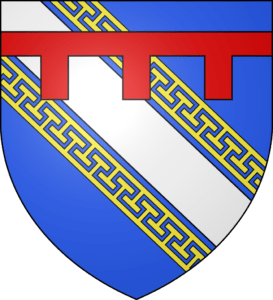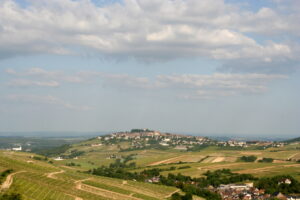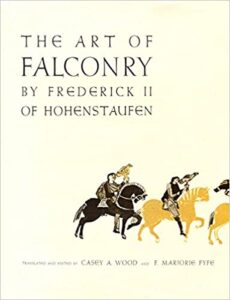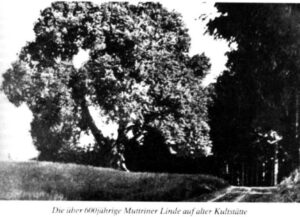
Have you ever stumbled over a historical figure and were overcome with the urge to bring that figure to life?
That was the case for me when I first encountered Stephen de Sancerre, more properly known Stephen I, the first Count de Sancerre (1133–1190). He became one of the principal characters in my historical fiction book Alina: A Song for the Telling.
Stephen is a fascinating historical figure, and to top it off, his story contains an intriguing blank spot. He accepted a proposal of marriage, by the standards of the times suitable at all levels. He settled his affairs and embarked on a long journey, bringing substantial gifts with him. Then, after a few months of contemplation, the groom returned home.
Reminiscent of “the dog that didn’t bark,” in a Sherlock Holmes mystery, the marriage didn’t take place. The historical record does not expand on this. One can’t help but wonder at what happened.
Stephen was born in France in 1133 as the third son of a powerful and well-connected lord, Count Theobald II of Champagne. Stephen inherited the county of Sancerre from his father, while his brother Henry received Champagne, and his eldest brother received Blois and Chartres. Thus, Stephen’s holdings were the smallest, but nonetheless nothing to sniff at; he was still one of the wealthiest lords of the land and a power to be reckoned with. On the strength of this, he was the first to claim the right to mint currency.
Stephen was evidently active and involved at many levels in the running of his estate and holdings. In Sancerre, he built a six-towered castle on the local hill and strengthened the fortifications of the town of Sancerre itself. He interested himself in the construction of a pond and several mills. This led to a lengthy dispute with the church which had laid claim to the land. It was eventually settled by splitting the proceeds from the mill among the disputing parties.

Remarkable for an age in which the concept of ‘Might is right’ customarily dominated the settlement of any disputes, Stephen repeatedly showed his willingness to establish different standards. In 1155, Stephen granted the Customs of Lorris to the merchants of the town. This charter, setting forth rights and protections, was considered one of the most progressive in the Capetian kingdom.
His interest in local laws and customs was wide-ranging. For instance, he abolished Formariage, a feudal law that gave lords control over the marriage of their serfs as well as the progeny of people dependent on him. According to the rule of Formariage, parties who married in another county from their county of residence automatically lost some of their property or had to pay a substantial fine.
Stephen also abolished a local custom which involved the liberation of a prisoner at Easter. This custom, invoking the freeing of Barrabas by Pontius Pilate, frequently led to led to bloody battles among members of the local population, and Stephen was determined to put a stop to this.
Stephen ensured that levies or fine taxes were subject to limits; he even arranged that those charged with the duty of collecting such levies were empowered to reduce the fine.
In many of his actions, Stephen showed his support of the church. For instance, in response to local church leaders’ requests, he promised that he would not receive on his lands any who as a result of their status, in accordance with the custom governing servitude, would otherwise become his property after one year. He also allowed the local monks to name their own abbots and granted them other concessions.
In 1169, when Stephen was almost 40 years old, Amalric I, the King of Jerusalem and father of the future Queen Sibylla, invited Stephen to come to Jerusalem. Amalric had chosen Stephen as a suitable husband for his daughter. Such a position would have resulted in Stephen becoming the King of Jerusalem upon the anticipated death of Amalric’s son Baldwin IV who suffered from leprosy and was not expected to live long.
Unquestionably, Stephen was eminently suitable by the standards of the 12th century. He was a wealthy and powerful lord in France and the grandnephew of King Stephen of England. In any event, Stephen accepted King Amalric’s invitation and traveled to Jerusalem, bringing a substantial gift of money from King Louis VII of France with him. The gift consisted of funds raised by King Louis VII out of a tax imposed in 1166 and levied for four or five years.
Once he arrived in Jerusalem, he engaged in prospective son-in-law duties. He involved himself in aspects of financial affairs by advising the king on the wisdom of instituting a general tax. Such a general tax was actually implemented in 1183. Stephen also presided over a court case on behalf of King Amalric. This case involved a dispute among the three daughters of Henry the Buffalo, each of whom claimed rights to their father’s estate. Stephen devised what might be termed a Solomonic judgement; he ordered the estate to be divided up equally among the three, while also stipulating that the younger two sisters would henceforth have to pay homage to the eldest.
And this is where the story becomes riddled with holes. Without adding any details, the record in the Sancerre family history states simply that Stephen returned home in 1173. There was not to be a marriage to Sibylla. It certainly was a long way to travel only to decide against a marriage.
To be sure, Stephen was not adverse to marriage. He had been married before he went to Jerusalem.
In 1153, he married the daughter of Godfrey of Donzy; there is some confusion about her given name which may have been Alix, Adelaide, or Matilda. The way in which this marriage came about is fascinating. Stephen’s intended was about to wed one Anselm de Trainel. On the day of this wedding, Stephen appeared and kidnapped her. Alix’s brother, Hervé III de Donzy lodged a complaint with Stephen’s brother Henry. Henry, in league with King Louis VII, besieged Stephen who had retired to the castle of Saint-Aignan. However, before battle could break out, the disputing parties settled. Stephen could proceed with his marriage to Alix and in recompense agreed to cede a portion of his holdings, Gien in the Loiret department of north-central France, to his new brother-in-law. According to the family history, Alix apparently was happy to agree to the transfer of property and to stay with Stephen. He had two sons with Alix. There is uncertainty about when she died; however, Stephen must have been a widower when he set out for Jerusalem.
When Stephen returned to France in 1173, he married a woman known as Dame Beatrix. Their marriage was of short duration; she died in 1179. He remarried a third time in 1187 to one Aénor. His third wife did not have much time with her husband; he departed for Jerusalem in 1190.
Meanwhile, Stephen’s actions in the years after his return from Jerusalem indicate a man who was independent and even rebellious. He picked various conflicts with King Phillip II, who happened to be a nephew of Stephen. King Phillip II. was the son of King Louis VII and his third wife, Adela of Champagne, Stephen’s sister. Stephen was the de facto leader among a group of powerful baronial rebels against the king in the years 1181 to 1185. Eventually the king, determined to put an end to feudal warfare, was able to suppress the rebellion, and Stephen had to concede defeat and submit to the authority of the king. In later years, King Phillip became the first French monarch to assume the title of “King of France.”
In 1190, Stephen and his brother Theobald decided to join the Third Crusade, led by King Phillip and Richard the Lionheart. Prior to his departure, Stephen commenced the abolition of serfdom in his domains. That fact alone makes him stand out as a remarkable individual.
Stephen died on October 21, 1990 at the Siege of Acre; his brother died a few months later.
The family history states that “Stephen and his brother died after performing many deeds of great valor.” The history further states that “Stephen I had many wonderful qualities; he was brave and filled with humanity. He lightened the burden on his people at a time when many French people were suffering and oppressed, by relieving them of various forms of servitude.”
Like the Chevalier de Bayard, known as “le chevalier sans peur et sans reproche,” Stephen might well have been described as “the knight without fear and beyond reproach.” Meanwhile, some of the Chevalier de Bayard’s contemporaries called him “the good knight” in recognition of his gaiety and kindness. I suspect that Stephen might have preferred such a moniker for himself.
As an aside, Sancerre was a wine producing region already in the 12th century, and control over the products of the harvest figured into negotiations between Stephen and other lords.
Images:
Attribution for image of coat of arms: This vector image was created with Inkscape by Jimmy44. Par Travail personnel i Le code de ce fichier SVG est valide. Cette image vectorielle a été créée avec Inkscape par Jimmy44., CC BY 3.0, https://commons.wikimedia.org/w/index.php?curid=3741649
Sancerre – the village: CC BY-SA 3.0, https://commons.wikimedia.org/w/index.php?curid=169638







